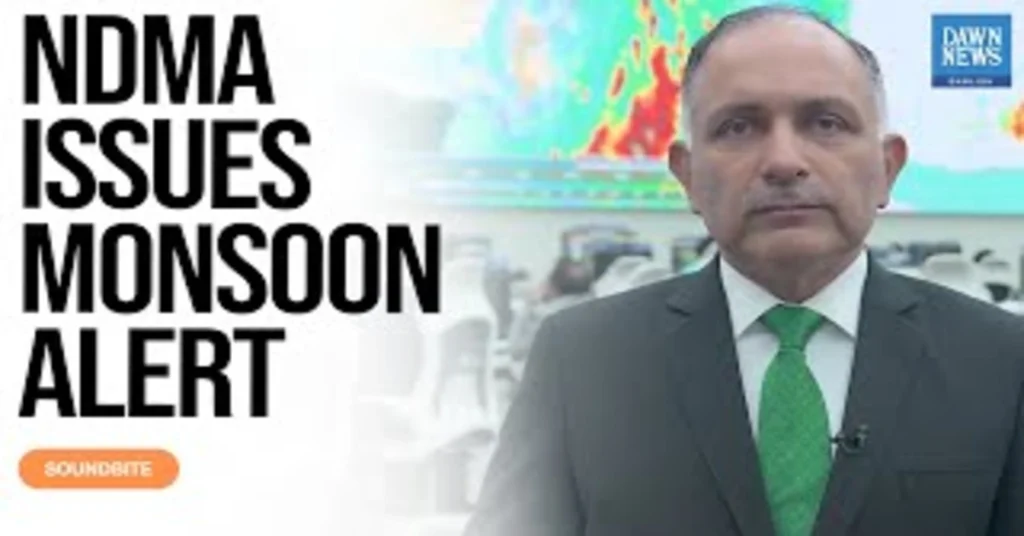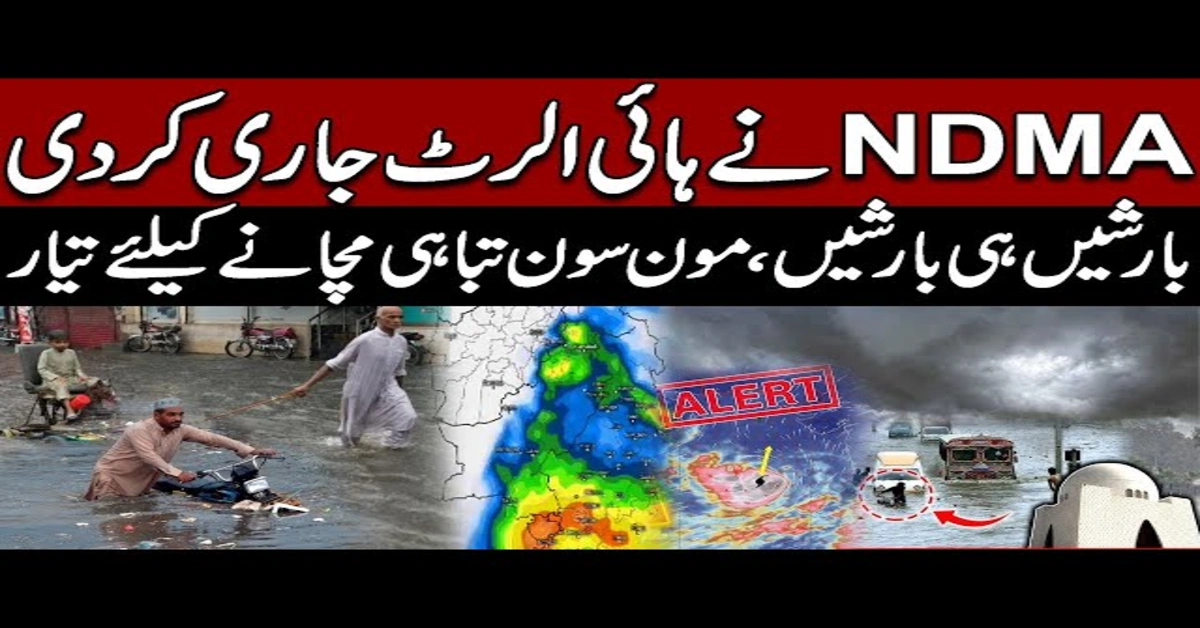NDMA issues a red alert ahead of Pakistan Monsoon 2025, warning of severe rains and possible flooding. Stay updated on weather alerts and safety measures.
Overview
Pakistan has entered a high-impact stretch of the rainy season, with authorities issuing a nationwide red alert as new storm systems line up over the next several days. According to National Disaster Management Authority (NDMA), the first round targets upper and central regions from August 23–27, followed by a second surge toward Sindh and eastern/southern Balochistan from August 27–29. Urban flooding, landslides in mountainous belts, and rapid river rises are the main concerns.
The Big Picture (August 23–30)
Three rain systems will affect large parts of Pakistan until August 30.
Authorities highlight the risk of flash floods and landslides in hilly regions, along with river surges.
Strong winds, thunderstorms, and cloudbursts may disrupt transport and cause damage to infrastructure.
The NDMA has urged citizens to take all weather warnings seriously and avoid unnecessary travel.
Timing and Regions Most at Risk
Wave 1: August 23–27
Targets upper and central regions, including Islamabad, Punjab, KP, AJK, and Gilgit-Baltistan.
Heavy downpours expected in Rawalpindi, Attock, Jhelum, Mianwali, Khushab, Sargodha, Sialkot, Gujrat, Hafizabad, and Mandi Bahauddin.
Wave 2: August 27–29
Focus shifts to Sindh (Karachi, Hyderabad) and eastern/southern Balochistan.
Risk of urban flooding in major cities and sudden hill torrents in rural areas.
Overall Period: August 23–30
Continuous unstable weather across the country.
NDMA emphasizes avoiding travel in risky zones and preparing for prolonged rain spells.
NDMA Warning on Rivers and Catchments
The Authorities has flagged the potential for rapid rises in major rivers:
Indus flows could reach 500,000 cusecs at Taunsa, Guddu, and Kalabagh.
Hill torrents in DG Khan, Rajanpur, and parts of Balochistan pose sudden flood threats.
Mountain regions in Gilgit-Baltistan are on high alert for glacial lake outburst floods (GLOFs) due to heavy rain and unstable slopes.
City and Region Outlook
Islamabad–Rawalpindi & Northern Punjab: Risk of urban flooding and traffic disruptions in low-lying areas and underpasses.
Central Punjab (Lahore, Sialkot, Gujranwala): Short, intense thunderstorms may cause drainage issues and power breakdowns.
Khyber Pakhtunkhwa & AJK: High chance of landslides and flash floods along mountain roads and valleys.
Gilgit-Baltistan: Ongoing landslide risks and unstable slopes due to saturated ground.
Sindh (Karachi, Hyderabad): From August 27, short but heavy monsoon showers could overwhelm drainage systems.
Eastern/Southern Balochistan: Risk of hill torrents washing out rural routes and small bridges.

Why This Monsoon Spell is Dangerous?
This period is especially risky because:
Multiple monsoon systems overlap, increasing rainfall intensity.
Soils are already saturated, making flooding more likely.
Steep terrains raise the risk of landslides.
Rivers and streams can swell quickly, endangering low-lying settlements.
Recent cloudbursts, like the 150 mm downpour in Buner, highlight the sudden and destructive power of extreme weather during this monsoon.
Also Read: Pakistan Weather Update: Deadly Rains & Flood Threats 2025
NDMA Safety Guidelines
Authorities advise everyone to:
Stay updated with official weather forecasts and alerts.
Keep essentials ready: food, water, medicines, and power backups.
Secure property: move valuables to higher ground and clear drainage.
Avoid risky travel during peak rain and never attempt to cross flooded roads.
Support communities by helping elderly or vulnerable neighbors.
How to Track Reliable Updates?
NDMA Advisories: Red alerts and district-level warnings.
Pakistan Meteorological Department (PMD): Severe weather bulletins and rainfall forecasts.
Provincial Disaster Management Authorities (PDMAs): Local evacuation notices and community guidance.
Final Thoughts
Pakistan faces a critical stretch of the monsoon until August 30, with NDMA red alerts in place for both northern and southern regions. The risk of flooding, landslides, and dangerous weather conditions is real, and preparedness is essential.
By staying informed, avoiding unnecessary risks, and following advisories, communities can minimize the impact of this severe spell and ensure safety for themselves and others.




Join The Discussion